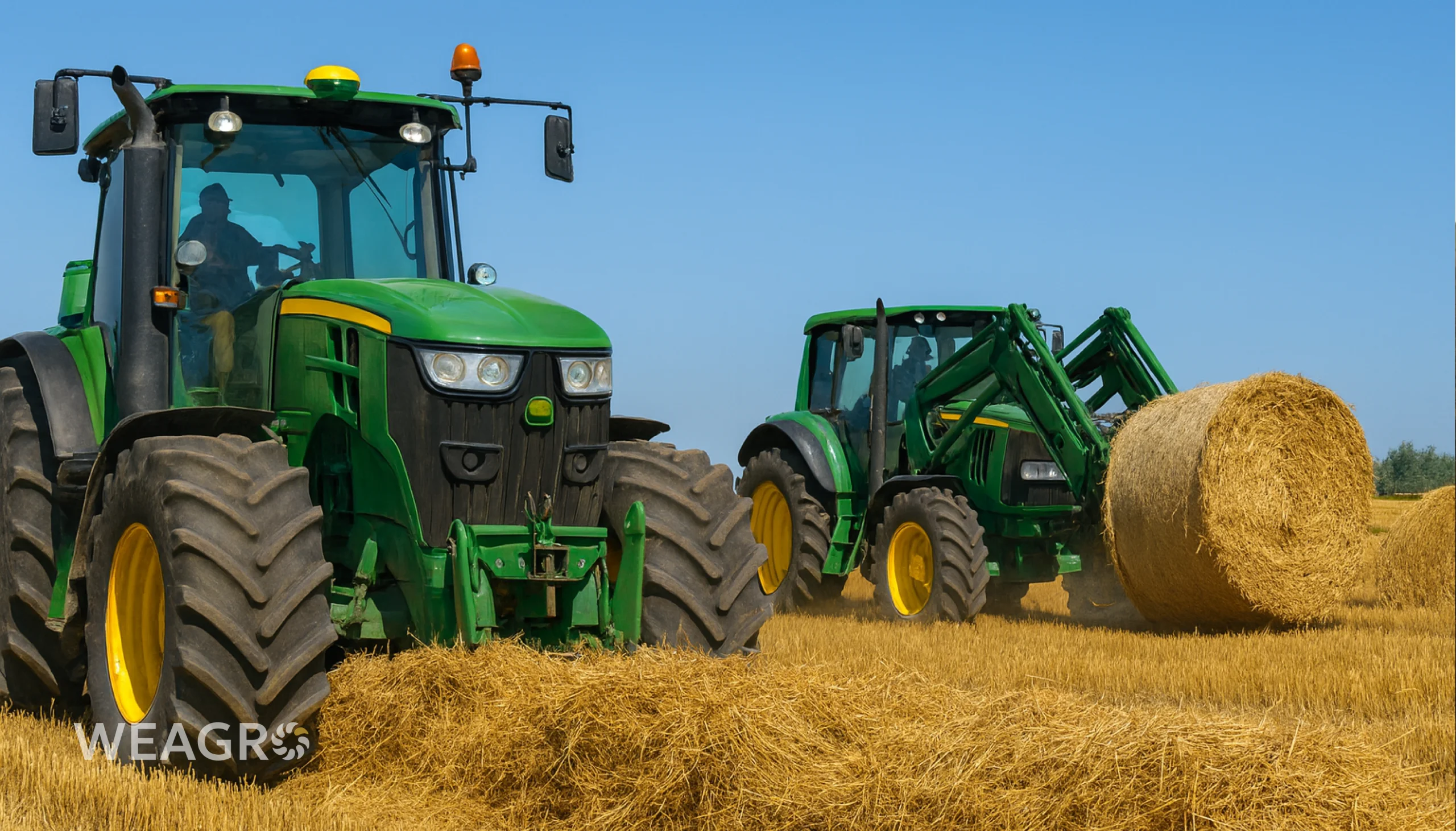Modern agriculture uses various types of sprayers — they are an integral part of automating plant care processes. These specialized devices not only significantly simplify and accelerate treatment but also improve its effectiveness and quality. This is important in conditions of increasing demand for high-quality products and sustainable agribusiness development. The information is relevant for gardeners, farmers, and those interested in effectively using modern technologies to increase yields and reduce time and resource costs.
What is a Field Sprayer
Using specialized equipment allows for rapid distribution of fertilizers over large areas, which significantly saves time. The basic device can be easily adapted considering the specifics of its intended use, as well as the characteristics of the agricultural crops being treated. Recalibration is available, along with installation of appropriate spray systems.
The types of sprayers designed for field work are very diverse, but they are all based on a basic construction. It includes:
- main tank;
- pump for circulating liquids;
- booms for positioning hoses and nozzles.
The operating characteristics of the equipment determine its working principle, and accordingly its purpose and productivity.
Types of Field Sprayers
Each model has specific parameters that determine the method and features of its subsequent operation.
- Mounted — compact, with small working width, equipped with three-point attachments for tractors;
- Trailed — have their own chassis but function only in combination with a tractor, which is necessary not only for movement but also for starting the pump and accordingly supplying liquid mixture from the tank;
- Self-propelled — autonomous solution equipped with an engine, chassis, and all necessary components for uninterrupted operation and execution of assigned tasks.
When comparing types of sprayers, it is necessary to consider the size of the area for which they are intended. For large fields, self-propelled models are optimal: they can treat thousands of hectares during a working day and can also be used for distributing granulated substances.
Mounted and trailed models are optimal for medium-sized fields. Mounted units cost less, but their tank is only 400-800 liters. Trailed units have a larger reservoir — up to 4 m
How to Choose a Field Sprayer
To select reliable, functional, and user-friendly equipment, it is useful to focus on the following criteria:
- treatment uniformity;
- boom width;
- working pressure;
- clearance (boom height above crops);
- operating costs (fuel consumption).
The choice depends on the size of fields to be treated. Additional options such as lighting will be an advantage, allowing work at any time of day.
It is important to purchase appropriate types of sprayers from verified, well-known manufacturers, which will guarantee equipment durability. The online service WEAGRO offers farmers unique conditions: the possibility of payment deferral for up to 180 days. This way you can purchase necessary equipment and start working, paying for it gradually without significant financial burden.
How to Adjust a Sprayer
For effective operation, preliminary calibration is mandatory, which will significantly improve the accuracy and uniformity of fertilizer distribution. There are no universal standards for volume and distribution of liquids: each agricultural crop grows under specific conditions, which determines planting density and accordingly the features of field treatment. How to adjust a sprayer? There are two basic methods:
- Traditional. Based on the required amount of fertilizer, an average application rate will be calculated.
- Systematic. Additionally considers: humidity level, current temperature indicators, wind strength, and equipment movement speed.
Additionally, other parameters must be used in calculations: size and shape of nozzle outlet openings, working pressure, working mixture density, and equipment working width. To assess consumption, it is necessary to:
- Fill the tank with water.
- Set working parameters — pressure, engine RPM.
- Place measuring containers under the tips and start liquid supply for 1 minute.
Settings must be adapted to the specific crop and fertilizer composition according to manufacturer recommendations for the equipment model being used.
Mounting Mechanisms for Field Sprayers on Tractors
For mounting mounted models, a three-point system is used — two lower arms and one upper arm, which are connected to corresponding points on the tractor with special fasteners. Hydraulic cylinders allow raising and lowering the structure, regulating spray height, which provides flexibility during operation.
Trailed sprayers are fixed using a coupling device that connects to a hook or hinge on the tractor. Hoses and connectors are necessary to form a unified hydraulic system that ensures liquid supply to the nozzles.
Both types are equipped with additional elements — stabilizers and shock absorbers, which ensure smooth operation during field movement.
Read also: How to register and deregister a tractor: procedure and necessary documents
If a Field Sprayer Breaks Down
If defects in operation are detected, it is important to immediately stop the unit to prevent further damage and perform the following actions:
- conduct a visual inspection to identify visible defects;
- determine the location and cause of breakdown (mechanical damage, pump malfunction, hydraulic or electrical system problems);
- perform minor repairs if necessary (replacing hoses or nozzles, adjusting fasteners).
If the breakdown is serious, it is important to promptly contact qualified technicians or use the manufacturer’s warranty. Regular maintenance will help avoid work interruptions: cleaning, assessing component condition, replacing worn parts.
How to Charge a Sprayer
In addition to mounted, trailed, and self-propelled devices designed for treating large fields, compact battery-powered models may also be used on farms. This type of equipment is used as an auxiliary element that allows quick treatment of small designated areas. How to charge this type of sprayer:
- choose a dry room with good ventilation;
- connect the equipment to the electrical network;
- wait for the indicator color to change from red to green.
Even with periodic use of the device, it is recommended to charge the battery every 90 days. After completing work, it is important not to leave the battery in a discharged state. Put the device on charge — this will significantly extend its service life.
How to Maintain a Field Sprayer
Proper operation and following manufacturer recommendations guarantee stable and uninterrupted equipment operation even under intensive loads. When using different types of sprayers, it is useful to know basic rules:
- Storage. Carefully wash all accessible elements after completing work to remove chemical residues, and drain all water from the system. Choose a dry place protected from rain and sun. If possible, use stands to avoid tire deformation.
- Care. Clean nozzles after each use, and check hoses and other components for cracks and damage.
- Maintenance. Regularly conduct visual inspections. Use only original spare parts to replace damaged components.
Periodically calibrate equipment to ensure spray accuracy and adjust the system according to the type of crops being treated.
Read also: Cultivator: What It Is and How to Choose Correctly
What is a Garden Sprayer
This is a special category of devices that ensures uniform distribution of chemicals on tall plants. This allows effective protection from pests and diseases, as well as promoting their healthy growth. There are different types of sprayers for gardens used for caring for trees, shrubs, flowers, and other crops. By carrying method, manual, shoulder, and backpack models are distinguished.
Types of Garden Sprayers
The choice depends on the plot area. Manual and motorized models exist, but the former are intended exclusively for growing seedlings or use in small gardens. For the agricultural sector, the following solutions are relevant:
- Electric — function autonomously, operating time on one battery charge depends on the specific model and should be at least 3-5 hours. Optimal for use both in open areas and in greenhouses.
- Motorized — units with powerful gasoline engines. Excellent range and telescopic hose allow quick treatment of tall trees. Used for distributing liquids and bulk components.
These types of sprayers are well suited for garden work. If productivity is important, the motorized option clearly wins, while for lightness and compactness — the electric one.
How to Choose a Garden Sprayer
To purchase the necessary equipment, it is important to consider its purpose and the specifics of subsequent operation. For this, the buyer should answer several basic questions:
- What area needs to be treated.
- Types of vegetation to work with (maximum tree height).
- Garden structure, presence of hard-to-reach places.
This will allow evaluation of available types of sprayers and selection of tank volume corresponding to territory size to minimize the number of refills during work. The pump type determines spray radius: in gasoline units this indicator can exceed 12 meters.
For the convenience of agricultural sector representatives, the online service WEAGRO was created. Thanks to it, there is no need to compromise between price and quality: you can confidently afford functional equipment for garden and field work from reliable, verified suppliers. And thanks to payment deferral, you can pay for purchases within 180 days.
How to Maintain a Garden Sprayer
To maximize equipment service life and significantly postpone its repair or replacement, it is important to:
- clean the tank and hoses after each use;
- regularly check and clean nozzles;
- store the unit in a dry place;
- check and lubricate all moving parts.
If a hose wears out, it must be promptly replaced. It is important to consider the features of different types of sprayers and the operating characteristics of the specific model — and it will reliably perform assigned functions for years.
Garden and field sprayers are an important tool of modern agribusiness. Their implementation allows optimization of the crop treatment process. This significantly reduces the time needed for field and garden treatment while improving crop quality and quantity. Thanks to precise and uniform spraying of fertilizers and protective agents, losses can be minimized and their use efficiency increased. The variety of equipment types and models allows farmers to select the most appropriate options for specific conditions.









